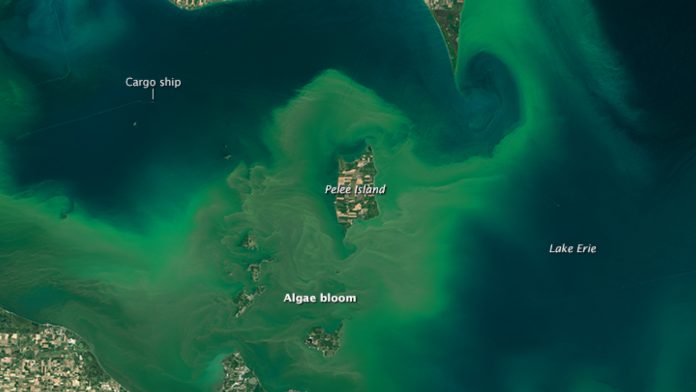How many of us like to be told what to do especially when we have spent many years in a particular occupation or industry? I’ll admit, the easiest way to get under my skin is to tell me I have to do something especially without helping me understand why.
We all know there are rules to follow in any profession, but most of the time we understand why those rules were put in place. Hence the conversation in our office and at recent board meetings about the executive order to declare eight watersheds (that includes 7,000 farms) of the Western Lake Erie Basin distressed watersheds.
This designation is aimed at stopping harmful algae blooms, which are caused by nutrients, mainly phosphorous, running off the landscape and into Lake Erie.
There are many interested parties to this issue — the governor wants something to be done immediately, and the Ohio Legislature feels that the governor is going around them to make rules with the executive order.
To top it off, the agriculture community feels like they were not invited to the table to come up with a solution, and the tourist industries on Lake Erie are concerned that enough hasn’t been done to address the impacts on their businesses.
Harmful algae bloom
So what is a harmful algae bloom? According to the National Oceanic & Atmospheric Administration (NOAA), “Harmful algal blooms, or HABs, occur when colonies of algae; simple plants that live in the sea and freshwater, grow out of control and produce toxic or harmful effects on people, fish, shellfish, marine mammals and birds.”
Harmful algae blooms need sunlight, slow-moving water, and nutrients (nitrogen and phosphorus) from sources such as lawns, waste water treatment overflows and agricultural run-off into lakes and rivers to grow.
In the aquatic ecosystem, phosphorous is the limiting nutrient, and during heavy rain events dissolved reactive phosphorous runs off of the landscape.
Phosphorous
Dissolved reactive phosphorous, whether from point or nonpoint sources, is available for the algae to feed on right away and jump starts the aquatic ecosystem.
Harmful algal blooms are a major environmental problem in all 50 states. This complex issue requires The Ohio Soil and Water Conservation Commission (OSWCC) to consider the declaration of the watershed in distress designation and enforce the rules that go along with it.
The Ohio Department of Agriculture (ODA) is charged with adopting an administrative set of rules that require producers to follow specific procedures for any nutrient applied to the soil (manure or fertilizer).
The OSWCC met in mid-July to discuss declaring the eight watersheds as distressed and voted to send it to a sub-committee for further study.
Through voluntary measures and best management practices, phosphorus and nitrogen are being reduced in Ohio. Many of these folks are willing to share their success stories, but even with those success stories the problems are not going to be fixed overnight.
What happens five years down the road when these rules have been enacted and we still have issues? This is a very large and complex issue, but one important to us at Coshocton SWCD even though we are miles away from northwest Ohio.
It is important that both the scientific community and landowner points of view are heard. This will make following and enforcing the rules an easier process. We hope all Ohio landowners and producers, along with their soil and water conservation districts, stay engaged in this issue.
Working with your local SWCD
If you have livestock, work with your local SWCD or agronomist to develop a Comprehensive Nutrient Management Plan (CNMP). This tool will help you manage the size, manure storage type and spreading schedule. This will also protect you against nuisance complaints.
Get your fertilizer certification as required by Senate Bill 150. If you farm more than 50 acres and apply commercial fertilizer, you are required to have this certification. Contact your local Extension office for details.
Use the 4R principals — applying the right source of nutrients at the right rate, at the right time, and in the right place.
Consult your local SWCD for technical assistance to solve problem areas on your farm. They will come out to the farm and look at these areas with you and work together to find solutions.













